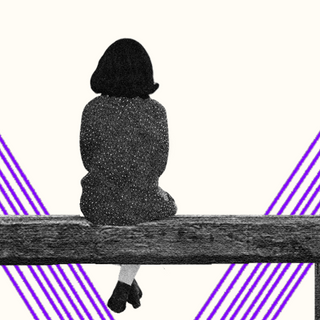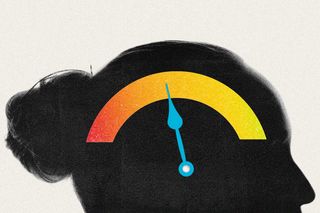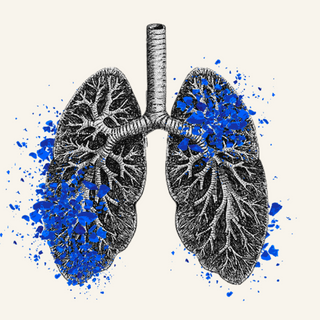
Adults Should Get Routine Screenings for Anxiety, Recommends U.S. Panel
This is among the first official guidelines to recommend preventive screenings for anxiety — marking a shift in how we approach mental healthcare.

During 2020, the first year of the Covid19 pandemic, the global prevalence of anxiety and depression soared by as much as 25%. The lockdown had splintered people’s mental health, a sign of caution for healthcare providers and governments to track mental health issues with vigilance. This forms the context of today, when a panel of U.S. doctors recently recommended that all adults aged between 16 to 65 should be routinely screened for anxiety — even if they don’t show any symptoms. This is among the first official guidelines to recommend preventive screenings for mental illnesses — marking a shift in how we approach mental healthcare.
The U.S. Preventive Services Task force drafted a set of guidelines for mental health screening, which apply to young and middle-aged adults, including people who are pregnant and post-partum. “When you go to your primary care provider, you get screened for many, many preventive conditions – blood pressure, heart rate, all kinds of things,” said Dr. Lori Pbert, a task-force member and professor in the Department of Population and Quantitative Health Sciences at UMass Chan Medical School.
“Mental health conditions are just important as other physical conditions, and we really need to be treating mental health conditions with the same urgency that we do other conditions.” The idea also blurs the rigid lines of separation between mental and physical health in public health.
Anxiety is both common and commonly misunderstood in health discourse. At least one in seven persons in India is believed to live with anxiety disorders and depression, but the real extent of the burden remains undiagnosed. The prevalence does little to counter the misconceptions — the cultural response is to dismissively equate it with routine “stress” and “worrying,” as if anxiety wasn’t a diagnosable psychiatric condition. The “invisibility” of mental health conditions like anxiety, and the many ways it presents, also bolsters the silence around it. According to one study, the delay in initiating treatment for anxiety — from the time one is referred to a health facility to arrival at thereceiving link health facility — is 23 years. But even in its purported invisibility, anxiety levels have drastically increased during the course of the pandemic — as adults experience an avalanche of stressors, in the form of work burnout, isolation, loneliness, relationship difficulties, and abuse.
These recommendations reiterate that screenings are helpful for those who do not have a diagnosed mental health disorder or do not show recognized signs or symptoms. Recommendations such as these are instructive for the larger healthcare discourse, for seeing mental health care as part of routine visits with primary care physicians can change how people look at anxiety, and better still, how it’s treated.
Related on The Swaddle:
Why Anxiety Can Sometimes Make People Feel Unsafe Even in Safe Environments
While the task force recommended using tools like questionnaires surveying people about feeling fear, worried, or other disruptive emotions, it hasn’t quite specified how often the screening should take place.
The need for a preventative care model around anxiety — rather than a curative one — has been noted over the years now. The evidence around screening shows it has helped with the early identification and treatment of anxiety. It serves the purpose of raising awareness among people, informing them of signs and treatments outside of cultural biases, and legitimizing millions of people’s experiences. Thinking of anxiety screening as something that is routine to a health check-up also puts a dent in the cultural silence around mental healthcare.
But there are notable risks that experts have flagged earlier. Screening results could be inaccurate, there could be bias and ignorance from the side of healthcare providers, and follow-up care may not always prove effective. “The most important thing to recognize is that a screening test alone is not sufficient to diagnose anxiety,” Pbert said.
In this case, given the urgency of mental health issues catalyzed by the pandemic, the panel noted the benefits of screening programs far outweigh the risks. “Anyone showing signs or symptoms of depression, anxiety, or suicide risk should be connected with care,” Dr, Pbert said. Moreover, the screening could help people who show symptoms but may not recognize their experiences as signs of an underlying illness. It then takes the onus away from people to know, identify, and name their anxiety in a culture where this isn’t always possible.
Related on The Swaddle:
What It’s Like To Live With: Clinical Anxiety
Cultural contexts and access to healthcare play an important role in how anxiety disorders play out in different settings. While routine screenings address the stigma and urgency of mental health, they still demand a more robust, padded infrastructure that most countries currently don’t have. Screenings require primary healthcare providers, but the world over is currently dealing with a shortage of doctors and nurses.
In India, there was a 7% shortfall of doctors at Primary Health Centres and a 57% shortfall of doctors at Community Health Centres, according to the Rural Health Statistics 2021. India also notoriously doesn’t have accurate data on practicing healthcare professionals, with some estimates including AYUSH doctors who practice homeopathy. Experts have cautioned against this inclusion; “Ayush doctors cannot be treated at par with MBBS doctors in the total figure,” one said.
Accessing anxiety screenings also presents other logistical challenges — such as mobility, affordability, and geographical access to healthcare providers. Screening for physical ailments, like cancers and tuberculosis, is still a half-won battle. Moreover, the stigma around mental health and anxiety would also complicate people’s access. This is more so for women and people from marginalized identities, who carry limited economic agency and are systemically excluded from healthcare due to gender roles and caste hierarchies. The mental health burden of anxiety disorders among women, in particular, is significantly higher than in men.
Arguably, there is a need for early screening for it approaches anxiety with an air of legitimacy, validating people’s experiences and struggles. It is a framework that is incomplete but still important, and must take into account cultural variations that restrict access to quality healthcare.
Saumya Kalia is an Associate Editor at The Swaddle. Her journalism and writing explore issues of social justice, digital sub-cultures, media ecosystem, literature, and memory as they cut across socio-cultural periods. You can reach her at @Saumya_Kalia.
Related


Nanoplastics ‘Damage’ Human Organ Cells, Affecting Vital Functions: Study
